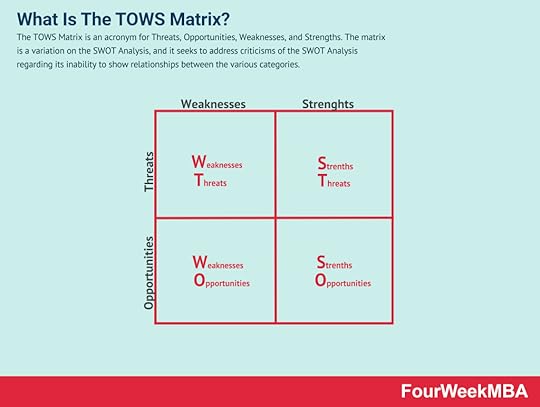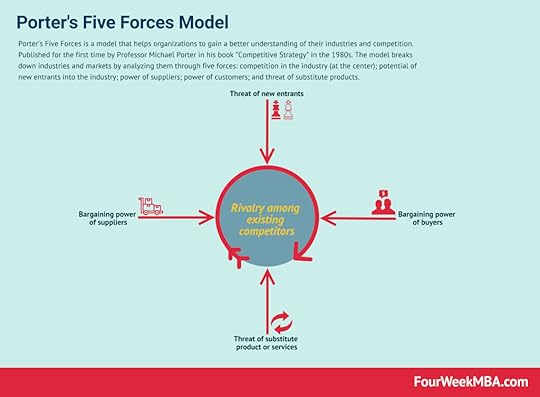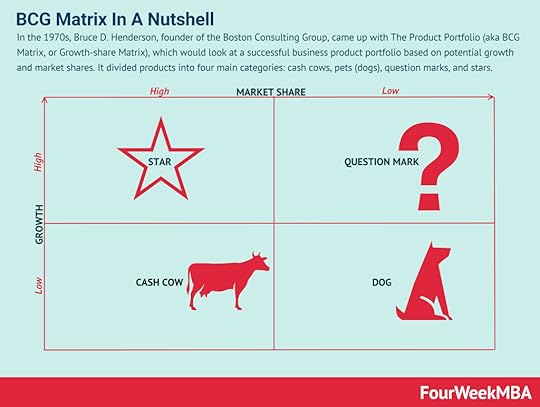TOWS Matrix vs. SWOT Analysis
The TOWS Matrix is an acronym for Threats, Opportunities, Weaknesses, and Strengths. It’s a variation on the SWOT Analysis, and it tries to address some of the weaknesses of the SWOT Analysis. Both can be useful to assess the market context.
Understanding a TOWS matrix The TOWS Matrix is an acronym for Threats, Opportunities, Weaknesses, and Strengths. The matrix is a variation on the SWOT Analysis, and it seeks to address criticisms of the SWOT Analysis regarding its inability to show relationships between the various categories.
The TOWS Matrix is an acronym for Threats, Opportunities, Weaknesses, and Strengths. The matrix is a variation on the SWOT Analysis, and it seeks to address criticisms of the SWOT Analysis regarding its inability to show relationships between the various categories.The TOWS matrix was created by author and management consultant Heinz Weihrich in 1999.
While both the TOWS matrix and SWOT analysis consider the same four factors, the former is more of a strategic planning tool. It looks at the specific relationships between internal and external factors that help an organization remove weaknesses, exploit strengths, take advantage of opportunities, and reduce or remove threats.
Each relationship is represented by a 2×2 matrix with resultant strategic options occupying four quadrants:
Strengths to opportunities (SO) – the strategy with the greatest chance of success where the organization focuses on its internal strengths to “double down” on external opportunities and increase market share.Strengths to threats (ST) – the second strategy calls on the organization to consider how its internal strengths could help it avoid real or potential market threats. Weaknesses to opportunities (WO) – how can market opportunities compensate for an organization’s internal weaknesses?Weaknesses to threats (WT) – this is a defensive strategy where the organization must seek to minimize the impacts of both its internal weaknesses and external threats. In some cases, this may force the organization to question whether it has a viable business.Understanding a SWOT analysis
The SWOT analysis was created by American management consultant and businessman Albert Humphrey. The analysis is the result of a decade of work between 1960 and 1970 at Stanford University where Humphrey developed a team-based approach to planning.
The analysis can serve much like a questionnaire for each factor. For example:
Strengths – what does the organization do well? Does it own intellectual property or possess a unique skill?Opportunities – are there changes to the external environment ripe for exploitation? How can the organization take advantage of a competitor’s weakness?Weaknesses – is IP outdated? Does the workforce require extra training? Is the organization’s financial position sustainable?Threats – what threat do the competition pose? Is a change of government likely to drive up costs? What about a fluctuation in the economic cycle?The SWOT analysis is a simple but effective way for an organization to assess its strengths, weaknesses, opportunities, and threats. Unlike the TOWS matrix, however, it does not clarify how a strength may be maximized or a weakness avoided. As a result, it is often used in conjunction with another analysis.
Read Next: TOWS Matrix, SWOT Analysis.
Other related business frameworks:
AIDA ModelAnsoff MatrixBusiness AnalysisBusiness Model CanvasBusiness Strategy FrameworksVRIO FrameworkAdditional resources:
Business ModelsBusiness StrategyDistribution ChannelsGo-To-Market StrategyMarketing StrategyMarket SegmentationNiche MarketingRevenue ModelsConnected strategic frameworks The PESTEL analysis is a framework that can help marketers assess whether macro-economic factors are affecting an organization. This is a critical step that helps organizations identify potential threats and weaknesses that can be used in other frameworks such as SWOT or to gain a broader and better understanding of the overall marketing environment.
The PESTEL analysis is a framework that can help marketers assess whether macro-economic factors are affecting an organization. This is a critical step that helps organizations identify potential threats and weaknesses that can be used in other frameworks such as SWOT or to gain a broader and better understanding of the overall marketing environment. Porter’s Five Forces is a model that helps organizations to gain a better understanding of their industries and competition. Published for the first time by Professor Michael Porter in his book “Competitive Strategy” in the 1980s. The model breaks down industries and markets by analyzing them through five forces
Porter’s Five Forces is a model that helps organizations to gain a better understanding of their industries and competition. Published for the first time by Professor Michael Porter in his book “Competitive Strategy” in the 1980s. The model breaks down industries and markets by analyzing them through five forces A blue ocean is a strategy where the boundaries of existing markets are redefined, and new uncontested markets are created. At its core, there is value innovation, for which uncontested markets are created, where competition is made irrelevant. And the cost-value trade-off is broken. Thus, companies following a blue ocean strategy offer much more value at a lower cost for the end customers.
A blue ocean is a strategy where the boundaries of existing markets are redefined, and new uncontested markets are created. At its core, there is value innovation, for which uncontested markets are created, where competition is made irrelevant. And the cost-value trade-off is broken. Thus, companies following a blue ocean strategy offer much more value at a lower cost for the end customers. In the 1970s, Bruce D. Henderson, founder of the Boston Consulting Group, came up with The Product Portfolio (aka BCG Matrix, or Growth-share Matrix), which would look at a successful business product portfolio based on potential growth and market shares. It divided products into four main categories: cash cows, pets (dogs), question marks, and stars.
In the 1970s, Bruce D. Henderson, founder of the Boston Consulting Group, came up with The Product Portfolio (aka BCG Matrix, or Growth-share Matrix), which would look at a successful business product portfolio based on potential growth and market shares. It divided products into four main categories: cash cows, pets (dogs), question marks, and stars. First proposed by accounting academic Robert Kaplan, the balanced scorecard is a management system that allows an organization to focus on big-picture strategic goals. The four perspectives of the balanced scorecard include financial, customer, business process, and organizational capacity. From there, according to the balanced scorecard, it’s possible to have a holistic view of the business.
First proposed by accounting academic Robert Kaplan, the balanced scorecard is a management system that allows an organization to focus on big-picture strategic goals. The four perspectives of the balanced scorecard include financial, customer, business process, and organizational capacity. From there, according to the balanced scorecard, it’s possible to have a holistic view of the business. Businesses use scenario planning to make assumptions on future events and how their respective business environments may change in response to those future events. Therefore, scenario planning identifies specific uncertainties – or different realities and how they might affect future business operations. Scenario planning attempts at better strategic decision making by avoiding two pitfalls: underprediction, and overprediction.
Businesses use scenario planning to make assumptions on future events and how their respective business environments may change in response to those future events. Therefore, scenario planning identifies specific uncertainties – or different realities and how they might affect future business operations. Scenario planning attempts at better strategic decision making by avoiding two pitfalls: underprediction, and overprediction.Other related business frameworks:
AIDA ModelAnsoff MatrixBusiness AnalysisBusiness Model CanvasBusiness Strategy FrameworksVRIO FrameworkThe post TOWS Matrix vs. SWOT Analysis appeared first on FourWeekMBA.



